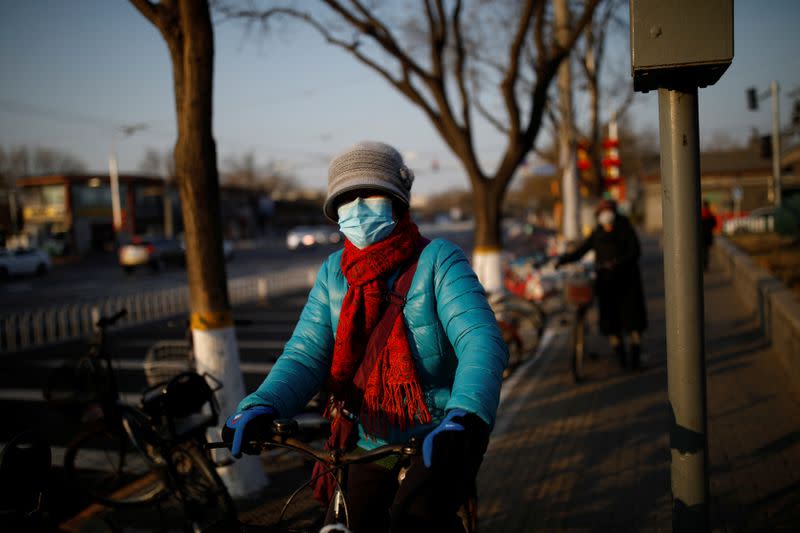Factbox - What do we know about the new coronavirus?

(Reuters) - A new coronavirus that has killed 170 people in China is spreading to other countries, alarming health experts.
Here is some of what we know - and don't know - about thevirus:
WHERE DID THE VIRUS COME FROM?
The virus is believed to have originated late last year in afood market in the Chinese city of Wuhan that was illegallyselling wildlife. Health experts think it may have originated inbats and then passed to humans, possibly via another animalspecies.
The World Health Organization (WHO) was alerted to severalcases of pneumonia in Wuhan at the end of December. Chineseauthorities confirmed they had identified a new virus a weeklater.
HOW DANGEROUS IS IT?
The new virus, identified by scientists as 2019-nCoV, is acoronavirus, a family of viruses that include the common coldand more serious diseases such as Severe Acute RespiratorySyndrome (SARS).
Coronavirus infections have a wide range of symptoms,including fever, cough, shortness of breath, and breathingdifficulties.
It is unclear how deadly the new virus is. Although severecases can cause pneumonia and death, there may be many cases ofmilder disease going undetected. Many of those who have died hadpre-existing medical conditions or were elderly, those withweakened immune systems.
HOW IS IT TRANSMITTED AND HOW CAN IT BE PREVENTED?
The new coronavirus can be transmitted from person toperson, although it is not clear how easily that happens. Mostcases so far are in people who have been in Wuhan, familymembers of those infected, or medical workers.
Transmission is most likely through close contact with aninfected person via particles in the air from coughing orsneezing, or by someone touching an infected person or objectwith the virus on it and then touching their mouth, nose oreyes.
In order to reduce the likelihood of transmission, the WHOrecommends that people frequently wash their hands, cover theirmouth and nose when sneezing or coughing, and avoid closecontact with those who are sick.
The U.S. Centers for Disease Control and Prevention saysthose who develop symptoms such as coughing and fever who havebeen in China in the last 14 days should call ahead to ahealthcare professional to establish if they need to be tested.
WHERE HAS IT SPREAD TO SO FAR?
The vast majority of the more than 8,000 cases so faridentified have been in China, mostly in and around Wuhan. Theother countries with confirmed cases include Australia,Cambodia, Canada, France, Germany, Japan, Malaysia, Nepal, SriLanka, Singapore, Thailand, South Korea, the UAE, the UnitedStates, and Vietnam.
The WHO is looking very closely at cases of person-to-persontransmission outside of Wuhan, which would suggest that it mayhave the potential to spread further.
WHAT ARE AUTHORITIES DOING?
The Chinese government has put Wuhan into virtual quarantineto try to stop the spread of the virus. A number of foreigngovernments have advised against non-essential travel to Chinaand have begun flying their citizens out of Wuhan.
IS THIS LIKE SARS?
The new virus is a strain of coronavirus, like SARS, whichkilled nearly 800 people globally in 2002 and 2003.
Unlike SARS, which also originated in China, it is believedthe new virus can spread during the incubation period of one to14 days, possibly before an infected person is showing symptoms.
So far, the new virus does not appear to be as deadly asSARS, but there have been more cases overall.
(Compiled by Alex Richardson and Rosalba O'Brien; Edited by Bill Berkrot)


